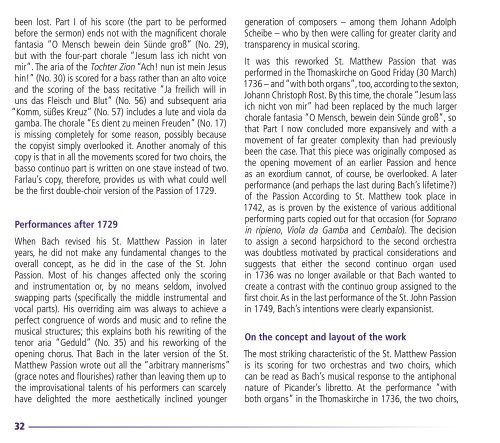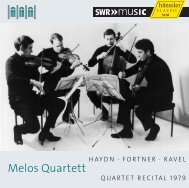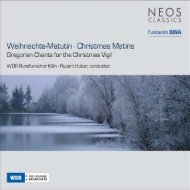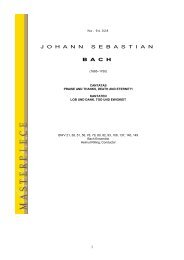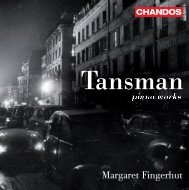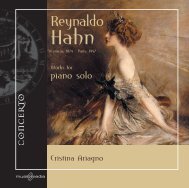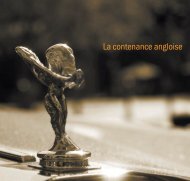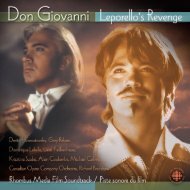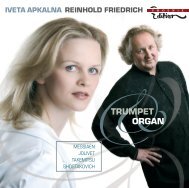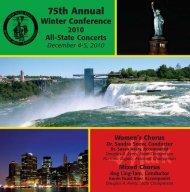Thomaskantor Georg Christoph Biller - Naxos Music Library
Thomaskantor Georg Christoph Biller - Naxos Music Library
Thomaskantor Georg Christoph Biller - Naxos Music Library
Create successful ePaper yourself
Turn your PDF publications into a flip-book with our unique Google optimized e-Paper software.
een lost. Part I of his score (the part to be performed<br />
before the sermon) ends not with the magnificent chorale<br />
fantasia “O Mensch bewein dein Sünde groß” (No. 29),<br />
but with the four-part chorale “Jesum lass ich nicht von<br />
mir”. The aria of the Tochter Zion “Ach! nun ist mein Jesus<br />
hin!” (No. 30) is scored for a bass rather than an alto voice<br />
and the scoring of the bass recitative “Ja freilich will in<br />
uns das Fleisch und Blut” (No. 56) and subsequent aria<br />
“Komm, süßes Kreuz” (No. 57) includes a lute and viola da<br />
gamba. The chorale “Es dient zu meinen Freuden” (No. 17)<br />
is missing completely for some reason, possibly because<br />
the copyist simply overlooked it. Another anomaly of this<br />
copy is that in all the movements scored for two choirs, the<br />
basso continuo part is written on one stave instead of two.<br />
Farlau’s copy, therefore, provides us with what could well<br />
be the first double-choir version of the Passion of 1729.<br />
Performances after 1729<br />
When Bach revised his St. Matthew Passion in later<br />
years, he did not make any fundamental changes to the<br />
overall concept, as he did in the case of the St. John<br />
Passion. Most of his changes affected only the scoring<br />
and instrumentation or, by no means seldom, involved<br />
swapping parts (specifically the middle instrumental and<br />
vocal parts). His overriding aim was always to achieve a<br />
perfect congruence of words and music and to refine the<br />
musical structures; this explains both his rewriting of the<br />
tenor aria “Geduld” (No. 35) and his reworking of the<br />
opening chorus. That Bach in the later version of the St.<br />
Matthew Passion wrote out all the “arbitrary mannerisms”<br />
(grace notes and flourishes) rather than leaving them up to<br />
the improvisational talents of his performers can scarcely<br />
have delighted the more aesthetically inclined younger<br />
32<br />
generation of composers – among them Johann Adolph<br />
Scheibe – who by then were calling for greater clarity and<br />
transparency in musical scoring.<br />
It was this reworked St. Matthew Passion that was<br />
performed in the Thomaskirche on Good Friday (30 March)<br />
1736 – and “with both organs”, too, according to the sexton,<br />
Johann <strong>Christoph</strong> Rost. By this time, the chorale “Jesum lass<br />
ich nicht von mir” had been replaced by the much larger<br />
chorale fantasia “O Mensch, bewein dein Sünde groß”, so<br />
that Part I now concluded more expansively and with a<br />
movement of far greater complexity than had previously<br />
been the case. That this piece was originally composed as<br />
the opening movement of an earlier Passion and hence<br />
as an exordium cannot, of course, be overlooked. A later<br />
performance (and perhaps the last during Bach’s lifetime?)<br />
of the Passion According to St. Matthew took place in<br />
1742, as is proven by the existence of various additional<br />
performing parts copied out for that occasion (for Soprano<br />
in ripieno, Viola da Gamba and Cembalo). The decision<br />
to assign a second harpsichord to the second orchestra<br />
was doubtless motivated by practical considerations and<br />
suggests that either the second continuo organ used<br />
in 1736 was no longer available or that Bach wanted to<br />
create a contrast with the continuo group assigned to the<br />
first choir. As in the last performance of the St. John Passion<br />
in 1749, Bach’s intentions were clearly expansionist.<br />
On the concept and layout of the work<br />
The most striking characteristic of the St. Matthew Passion<br />
is its scoring for two orchestras and two choirs, which<br />
can be read as Bach’s musical response to the antiphonal<br />
nature of Picander’s libretto. At the performance “with<br />
both organs” in the Thomaskirche in 1736, the two choirs,


